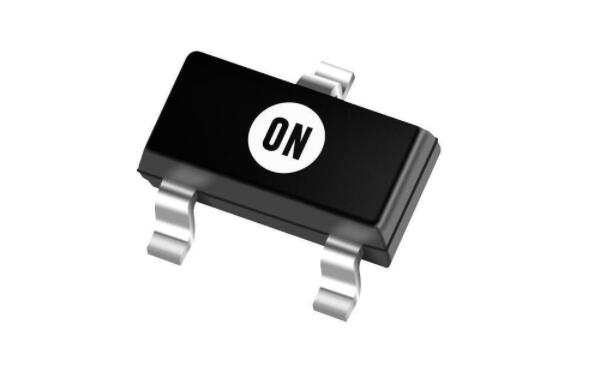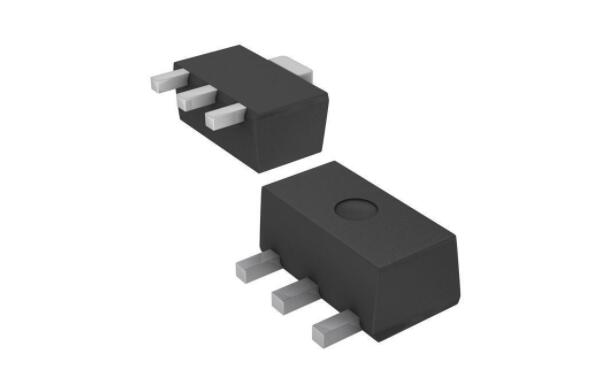Identification and detection of triode in electronic components
Date:2021-05-11 17:08:11 Views:3378
Triode, the full name should be semiconductor triode, also known as bipolar transistor and crystal triode. It is a semiconductor device for controlling current. Its function is to amplify weak signals into electrical signals with large amplitude value. It is also used as a contactless switch. Triode is one of the basic components of semiconductor. It has the function of current amplification and is the core component of electronic circuit. Triode is to make two PN junctions close to each other on a semiconductor substrate. The two PN junctions divide the whole semiconductor into three parts. The middle part is the base area, and the two sides are the emission area and collector area. The arrangement modes are PNP and NPN. Symbol: "Q, VT"
The triode has three electrodes, namely B, C and E, in which C is the collector (input electrode), B is the base (control electrode) and E is the emitter (output electrode)

Function of triode: amplification, modulation, resonance, switch
(1) Current amplification:
Triode is a current control device. It uses base current IB to control collector current IC and emitter current ie. without IB, there will be no IC and ie. as long as there is a small IB, there will be a large IC. In the amplifying circuit, this characteristic of triode is used to amplify the signal.
(2) Switching action:
When the triode is used as a switch, it works in two states: cut-off and saturation.
In the triode switching circuit, the collector and emitter of the triode are equivalent to a switch. When the triode is cut off, the internal resistance between the collector and emitter is very large, which is equivalent to the off state of the switch; When the triode is saturated, the internal resistance between its collector and emitter is very small, which is equivalent to the on state of the switch.
Detection of triode electrode
Discrimination triode pin:Generally, the arrangement of pins can be found in the manual according to the model. If the model is unknown, the resistance block of the multimeter can be used to judge the three poles e, B and C.

1.Identify base and tube models
Set the multimeter to R × 100 or R × For 1K gear, connect a black probe to a pin of the triode, and the red probe to the other two pins of the triode until the measured two resistance values are very small. The pin connected by the black probe is the base of the NPN tube; If the above situation does not occur, connect the red probe to one pin of the triode and the black probe to the other two pins of the triode respectively until the measured two resistance values are very small, and the pins connected to the red probe are the base of PNP tube.
2.Distinguish between collector and emitter
Set the assembly meter to R × At 1K gear, the two probes are connected to the other two pins of the tube at the same time. Connect a resistance of tens of kiloohms or a wet finger between the base and the assumed collector to observe the swing of the probe; Then use the same method to exchange the probe for measurement. For NPN tube, the probe swings greatly once. The black probe is connected to the collector of the triode and the red probe is connected to the emitter of the triode; For PNP type tube, when the probe swings greatly, the red probe is connected to the collector of the triode and the black probe is connected to the emitter of the triode.
3.Discrimination between germanium tube and silicon tube
By measuring the forward and reverse resistance of two PN junctions with a multimeter, we can distinguish whether it is a germanium tube or a silicon tube. Generally, the forward resistance of silicon tube is about 3-20 kiloohm, and the reverse resistance is greater than 500 kiloohm. The forward resistance of germanium tube is about hundreds of ohm, and the reverse resistance is greater than 100 kiloohm
4.Estimate DC current magnification
Using the above method to distinguish the collector and emitter, observe the swing of the watch needle. The greater the swing amplitude of the watch needle, the greater the current magnification.
5.Estimation of reverse leakage current
Multimeter setting R × At 1K gear, open the base and measure the resistance from the collector to the emitter. For PNP tube, the red and black probes are connected to the collector and emitter respectively (the opposite is true for NPN tube). The greater the measured resistance, the smaller the reverse leakage current, and the more stable the performance of triode. Usually, silicon tube is smaller than germanium tube, high frequency tube is smaller than low frequency tube, and low power tube is smaller than high power tubeNote: the method of distinguishing triode with digital multimeter is quite different, because for digital multimeter, the black pen is connected to the negative pole of the battery in the meter and the red pen is connected to the positive pole. In addition, instead of using ohmic block, PN junction block is used for measurement.

Because transistors are nonlinear components, the resistance values measured by different multimeter and different measuring range of the same transistor can vary greatly. In addition, the resistance values of different types of transistors are very related.
Transistors with normal positive and negative resistance are not necessarily good. Some obviously damaged transistors can be seen through resistance measurement, but there are many situations that cannot be reflected, such as poor amplification performance or poor high-frequency performance of the tube. Therefore, the resistance method is only a rough measurement method, which can be used for general judgment, but can not be used as a very reliable basis.




 Weixin Service
Weixin Service

 DouYin
DouYin
 KuaiShou
KuaiShou





















